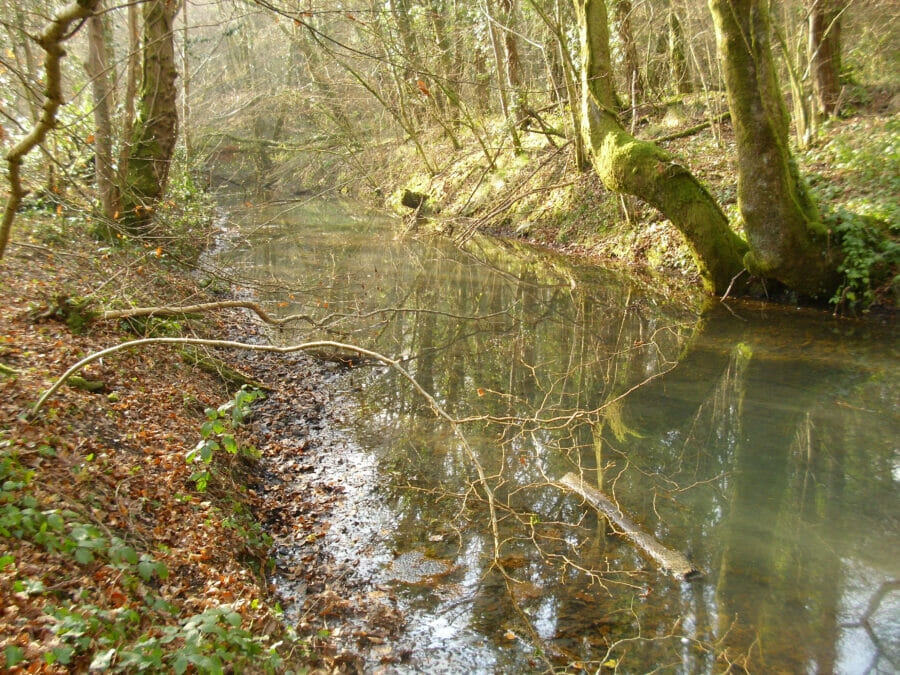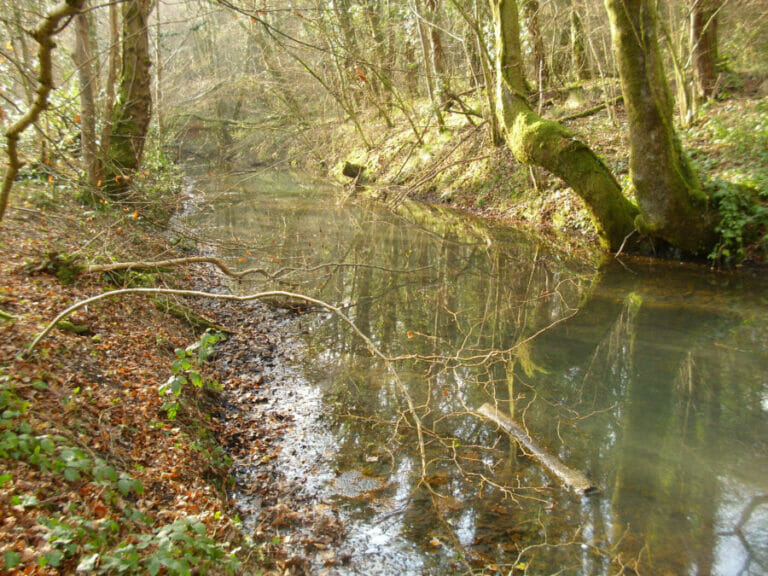Introduction
A clear and well preserved feature, still with a depth of water although the presumed level mouth has been obscured by slippage. It extends for about 560 yards before falling into the Clyne river. It is one of the most interesting pieces of industrial archaeology in the Clyne Valley is also the most enigmatic.
No contemporary maps or other documentation exist to confirm the original purpose or date of this feature but its appearance and location leave little doubt that it was originally a colliery boat level (i.e. an underground mining canal used to convey coal to the surface by water). It is on far too large a scale to be simply a drainage adit, although clearly, it has also served this purpose.
The Royal Commission on the Ancient & Historic Monuments of Wales dates the level to the early 1840s on the grounds that no trace of the level appears on the Swansea tithe map which was prepared in about 1840/41. This date, however, is questionable: a date in the 1840s would be surprisingly late for a feature such as this and the schedule to the deposited plans of the 1854 Swansea Docks and Mineral Vallies [sic] Railway describes it as an ‘old Canal’, which would hardly have been appropriate if it had been created little more than ten years previously. A more likely date is around 1800. Several other examples of the boat level as a means of coal winning are known, almost invariably belonging to the second half of the eighteenth century, including the Clyndu boat level at Morriston which dates to 1771. On this basis, therefore, the Rhydydefaid boat level could be interpreted as an attempt by John Morris I to work the coal following his acquisition of the Clyne Valley estate in 1771 and so be dated to the 1770s. Alternatively, it could be seen as an early nineteenth-century development which, in conjunction with the Oystermouth Railway of 1804 (with its Clyne valley branch), represented a campaign by John Morris to get his Clyne Valley coal into production. John Morris, both father and son, were closely involved with the promotion of the Oystermouth Railway and John Morris II is known to have been working coal in the Clyne Valley in the years 1812–14. On this interpretation, coal would have been floated out of the level and then trans-shipped to waggons on the Oystermouth Railway. However, the Clyne Valley branch, built in 1804–07 did not extend as far as the boat level and it can only be assumed, if this was the thinking behind the boat level, that the scheme was abandoned before it was complete, possibly because the seams of coal encountered in the level were steeply inclined and so difficult to work economically.

